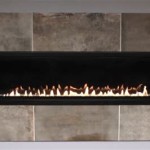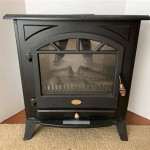```html
Replacing Gas Fireplace Logs: A Comprehensive Guide
Gas fireplaces offer a convenient and aesthetically pleasing alternative to traditional wood-burning fireplaces. One of the key visual components of a gas fireplace is the log set, which mimics the appearance of burning wood. Over time, these logs can deteriorate due to heat exposure, soot accumulation, and physical damage. Replacing gas fireplace logs is a straightforward process that can significantly enhance the fireplace's appearance and efficiency. This article provides a comprehensive guide to understanding the need for replacement, selecting appropriate logs, and executing the replacement process safely and effectively.
The logs in a gas fireplace are not just for aesthetics. They are carefully positioned to direct the flames and ensure efficient combustion. Incorrect log placement can lead to incomplete combustion, resulting in soot buildup, reduced heat output, and potentially hazardous carbon monoxide production. Therefore, understanding the role of log placement is crucial before undertaking a replacement project.
Understanding the Need for Log Replacement
Several factors can necessitate the replacement of gas fireplace logs. The most obvious is physical damage. Cracks, chips, or complete breakage can occur due to accidental impact or simply the constant stress of high temperatures. These damages not only detract from the fireplace's aesthetic appeal but can also alter the flame pattern, affecting combustion efficiency.
Another key indicator is soot accumulation. Over time, even with proper ventilation, soot can build up on the log surfaces. This buildup can make the logs appear dull and lifeless, obscuring their natural wood-like texture. While some soot is normal, excessive accumulation can indicate an underlying issue, such as improper gas mixture or poor ventilation. Attempting to clean excessively sooty logs is often futile; the soot is deeply embedded and difficult to remove without damaging the logs.
Fading or discoloration is another sign that replacement may be necessary. The intense heat from the gas flames can cause the paint or finish on the logs to fade over time, resulting in an unnatural or uneven appearance. This is especially noticeable on logs that are directly exposed to the flames. While minor fading may not be a major concern, significant discoloration can significantly detract from the fireplace's visual appeal.
Finally, consider the log's structural integrity. Repeated heating and cooling cycles can weaken the logs, making them brittle and prone to crumbling. If the logs are easily damaged or appear to be disintegrating, replacement is essential to prevent further deterioration and maintain the fireplace's functionality and safety.
Selecting the Right Replacement Logs
Choosing the correct replacement gas fireplace logs involves considering several key factors, including material, size, style, and burner type compatibility. The most common materials for gas fireplace logs are ceramic refractory and concrete. Ceramic refractory logs are known for their durability and heat resistance. They are typically more expensive but offer a longer lifespan and can withstand higher temperatures without cracking or warping. Concrete logs are a more economical option but may be less durable and more prone to damage over time. They still provide a realistic appearance and are suitable for many gas fireplaces.
Size is a crucial consideration. The new logs must fit comfortably within the firebox without obstructing the burner or interfering with the fireplace's ventilation. Measure the dimensions of the existing logs or the firebox itself to determine the appropriate size range. It is essential to choose logs that are neither too large nor too small for the fireplace.
The style of the logs should complement the overall aesthetic of the room. Gas fireplace logs are available in a wide variety of styles, ranging from traditional oak and birch to more contemporary designs. Consider the existing decor and choose a style that enhances the fireplace's visual appeal. Consider factors such as bark detail, wood grain texture, and overall shape when making your selection.
Burner type compatibility is perhaps the most critical factor. Gas fireplaces typically use either vented or ventless (vent-free) burners. Vented fireplaces require a chimney or flue to exhaust combustion gases, while ventless fireplaces are designed to operate without external venting. It is essential to choose logs that are specifically designed for the type of burner in the fireplace. Using the wrong type of logs can lead to incomplete combustion, carbon monoxide buildup, and other safety hazards. Always consult the fireplace manufacturer's instructions to determine the appropriate type of logs for your specific model.
Furthermore, ensure the logs are certified by a recognized testing agency, such as the American Gas Association (AGA) or Underwriters Laboratories (UL). Certification indicates that the logs have been tested and meet specific safety standards.
The Log Replacement Process: A Step-by-Step Guide
Replacing gas fireplace logs is a relatively straightforward process, but it requires careful attention to safety and detail. Before beginning any work, ensure the gas supply to the fireplace is completely shut off. Locate the gas shut-off valve, typically located near the fireplace or in an adjacent room, and turn it to the "off" position. Allow the fireplace to cool completely before proceeding.
Next, carefully remove the existing logs. Note their original placement, as this is crucial for proper combustion. Taking photographs or making a sketch of the log arrangement can be helpful. Gently lift the logs out of the firebox, being careful not to damage any of the internal components of the fireplace. Dispose of the old logs according to local regulations. Some municipalities may have specific guidelines for disposing of ceramic or concrete materials.
Clean the firebox thoroughly. Use a brush or vacuum cleaner to remove any debris, soot, or dust that has accumulated inside. Pay particular attention to cleaning the burner and any surrounding components. A clean firebox ensures proper airflow and efficient combustion.
Carefully install the new logs according to the manufacturer's instructions. The log placement is critical for proper flame pattern and combustion. Refer to the photographs or sketches taken earlier to ensure the logs are positioned correctly. The logs should be arranged in a way that allows for adequate airflow around the burner and prevents the flames from directly contacting the firebox walls. Avoid stacking the logs too tightly, as this can restrict airflow and lead to incomplete combustion. Ensure that the pilot light assembly is not obstructed by the logs.
After installing the logs, turn the gas supply back on and test the fireplace. Light the pilot light according to the manufacturer's instructions. Observe the flame pattern. The flames should be even, stable, and properly directed. If the flames are uneven, flickering excessively, or producing excessive soot, adjust the log placement as necessary. Refer to the fireplace's owner's manual for troubleshooting tips.
Inspect the area around the fireplace for any gas leaks. Apply a soapy water solution to the gas connections and look for bubbles, which indicate a leak. If a leak is detected, immediately turn off the gas supply and contact a qualified gas technician to repair the leak before using the fireplace. Regular maintenance, including annual inspections by a qualified technician, is essential to ensure the fireplace's safe and efficient operation.
Finally, monitor the fireplace during its initial use. Ensure the flames are burning properly and that there are no unusual odors or signs of incomplete combustion. Make any necessary adjustments to the log placement or gas flow to optimize the fireplace's performance. Proper installation and regular maintenance will ensure that the gas fireplace provides years of safe and reliable operation.
```
How Long Do Gas Logs Last To Replace Fireplace

How To Select And Install A Gas Fireplace Log Set Fireplaces Direct Learning Center

How Long Do Gas Logs Last To Replace Fireplace

How Long Do Gas Logs Last To Replace Fireplace

Warming Trend Update Gas Logs To Improve Performance And Appearance Walton

How To Select And Install A Gas Fireplace Log Set Fireplaces Direct Learning Center

How To Put In A Gas Log Set For Fireplace

When Should I Replace My Gas Fireplace Logs Greene County Mo Benton Ar Ozark

What You Need To Know About Gas Fireplace Logs Fireplaces Direct Learning Center

Peterson Real Fyre White Birch Vented Gas Log Set Woodland Direct
Related Posts








